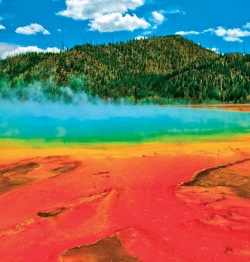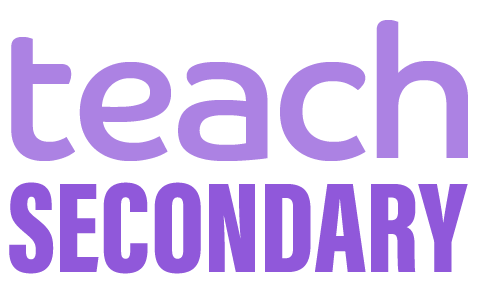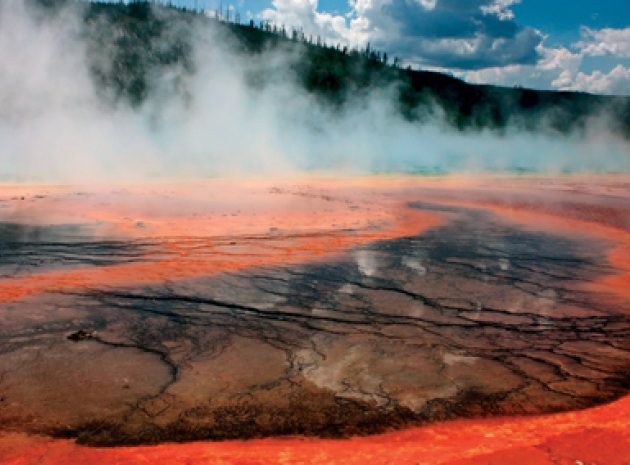Today you will…
Learn about volcanic activity and the nature of volcanic eruptions be able to recall what happens during a volcanic eruption, leading on to a description of why ash, in particular, can cause problems for the global economy explain the human impact of a supervolcano and may consider the various ways in which a disaster could be managed.
The sky is darkening…
...as the sunlight dims, the horizon turns blood red. It is a little bit windy and feels cool for the time of day; as the light starts to disappear so do the beautiful colours and all you can see is grey. Birds fly back to their nests to roost and you can hear a dog barking. More and more people are coming outside and gazing into the sky. You start to feel uneasy and a little bit scared. Many miles away in the USA ash is raining down. You know thousands of people have died, and now the skies over Britain are dark too. Will you survive post Yellowstone?
Setting the scene with Year 8 or 9 for a series of activities based on the captivating Yellowstone Park supervolcano is an easy task. Many students are familiar with volcanoes, of course, and are therefore quickly engaged and excited with the idea of a supermassive eruption.
Deep in the Earth’s mantle beneath Yellowstone Park in the USA is a hotspot. A geological feature so deep it does not move like the continents. As the Earth’s tectonic plates move over the top it causes massive volcanic activity. Similar activity has created whole chains of islands in the Pacific that we call Hawaii. Yellowstone itself is a supermassive volcano with a caldera 45 miles wide.
Starter activity
Investigating hotspots
There are numerous demonstrations of volcanic eruptions that can be shown in the classroom. You can select one that is appropriate for your age group and ability range and the equipment you have. Superb examples include the Wax Volcano described in detail with teachers’ notes by the Royal Society of Chemistry, which models a hotspot (Additional Resources 1). Using cola and table salt or mints shows how the extrusion of air can be catalysed by a surface in the same way as an extrusive eruption. Another superb demonstration of eruptions also described in detail by the RSC is the reaction of ammonium dichromate, an orange crystalline solid, which when ignited produces sparks and ‘ash’ (AR 2).
Main activities

1. Just a bit of ash…
In May 2010 a relatively small volcano in Iceland began to erupt, Eyjafjallajökull. Travel chaos ensued with planes grounded over fears of the effect of ash on the engines. A year later another Icelandic volcano, Grimsvötn caused similar disruption.
Show pupils a video sequence of the eruption in Iceland (AR 3) and encourage them to make qualitative observations using a worksheet with closed and open questions. These could cover where the volcanic ash is coming from, what it looks like and what it is made of. Discuss your answers.
In 1989 a KLM flight almost crashed due to volcanic ash (AR 4). Allow pupils to discuss and speculate why they think volcanic ash could be dangerous to planes then show animation (AR 5) and the clip from Bang Goes the Theory (AR 6).
2. Rubies, diamonds and emeralds
Pupils enjoy proving for themselves how dangerous volcanic ash is and this is easy to achieve if you have any as a resource (it can be freely purchased as a geological sample). On examination under a microscope volcanic ash is rough and often shard-like. It is easy to make 2 comparisons with ordinary rock or dirt. Volcanic ash often contains glassy pieces of obsidian and even small pieces of brightly coloured gemstones like rubies and topaz, and you can encourage pupils to describe the differences they can see. There are a range of high quality microscope images available via Google Image with a particularly good example on the website for the Centre of Ice and Climate in Copenhagen (AR 7).
3. Counting the cost
The effect of ash from a volcano as small as the Icelandic volcano can be tremendous for the economy. People were stranded all over the world and the event was estimated to cost the economy £2.2 billion (AR 8). Ask pupils to imagine they are stuck overseas because of the ash cloud and want to come home. One airline company desperate not to lose money decides to let its planes fly. Would you travel on the plane or not and why?
Home learning
• Exploring Yellowstone – what clues do we find now in Yellowstone that tell us about its volcanic past, present and future? Pupils should investigate the landscape using the Yellowstone National Park Website (AR 10) and can discover facts about geysers, mudpots and the caldera.
• Pupils investigate the country of origin of foods in their homes and supermarkets and describe which essentials would become unavailable if it could not be sourced from outside the UK due to a supervolcanic eruption.
Summary

A dark world
The effects of an eruption at Yellowstone would be felt worldwide. Many internet resources exist predicting the severity of the catastrophe depending on your location in the world (AR 9). Some examples include 1000km3 of ash ejected into the atmosphere along with 2000 million tons of sulphur. Temperatures would plummet, satellite communication could fail and drinking water be contaminated. Crops worldwide would wither and die.
Tell pupils they are in a top-secret control room set up in a former nuclear bunker. They should work together in teams to annotate a disaster zone world map. Using internet-based resources they should investigate the likely impact at different distances from the supervolcano and use a key to illustrate this.
Key zones could be areas of loss of life, the ash cloud spreading zone, mudslides, contaminated drinking water and severe crop failures.
Info bar
Additional resources
1. Wax Volcano
2. Ammonium dichromate volcano
3. ITN news report
4. KLM flight 867
5. Animation of volcanic ash in plane engine
6. Bang Goes the theory volcanic ash
7. Images of volcanic ash
8. Stranded at Schipol
9. BBC Science – The world’s biggest bang
10. Yellowstone National Park website
http://www.nps.gov/yell/index.htm
• At-Bristol science centre brings science to life, with hundreds of exhibits, a Planetarium, science shows and workshops. Call 0845 345 3344 or visit at-bristol.org.uk/education
Stretch them further
During their work in the control room pupils are coordinating the disaster management in the immediate vicinity of the volcano. Pupils decide what resources they will need to send where and how much the mission will cost? Give pupils a budget, a list of items they can purchase and a description of three disaster zones, which they can find on a map of the USA:
• In Salt Lake City volcanic ash is raining down hard roofs are at risk of caving in and transport is tricky because the ash is damaging car engines.
• In Idaho falls close to Yellowstone huge mudslides have enveloped houses and schools.
• At Jackson, lava flows have prevented planes from taking off or landing and survivors food supplies are beginning to run out.
About the expert
Dr Joanna L. Rhodes M.Chem, D.Phil, MRSC is a teacher of science at Shelley College, Huddersfield










